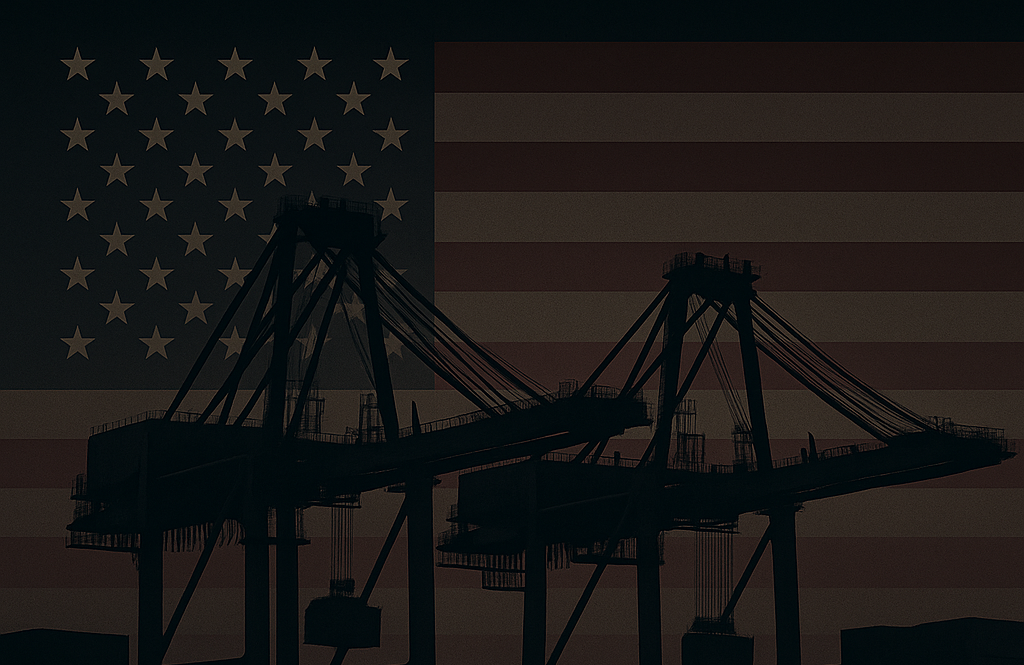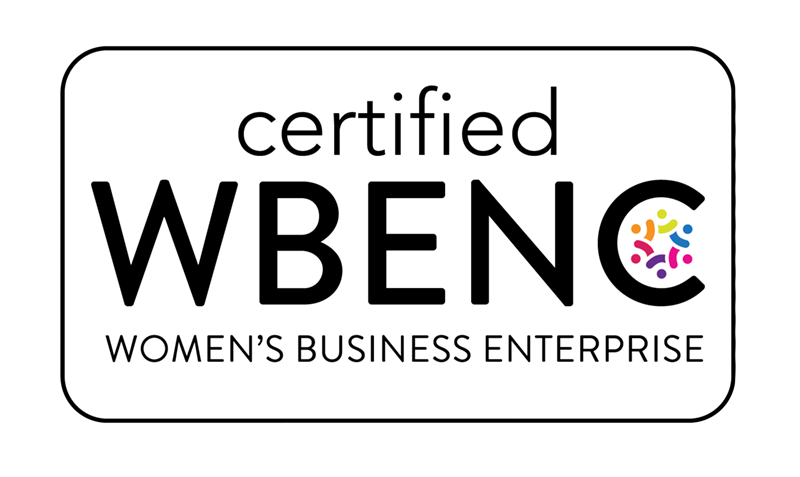Beyond the Basics:
Building a Trade Compliance Strategy That Scales with Your Business-Part 4
Audio Conversation:
Full Blog Article:
For many small and midsize businesses (SMBs), getting started with global trade means learning just enough to get the goods in and out. But once you’re in the game, whether importing parts or exporting finished products, the stakes rise quickly. What once felt like simple paperwork or minor delays can turn into serious compliance risks, fines, or supply chain disruptions.
That’s why it’s not enough to “get by” with the basics. If your business is growing, or has plans to, your compliance strategy must grow with it. In this fourth article of our five-part series,
Beyond Borders: Mastering Compliance for Growth, we’ll explore how small businesses can move from reactive to strategic trade compliance. We’ll walk you through what long-term planning looks like, how to future-proof your processes, and where expert partners like customs brokers and freight forwarders can plug into your success story.
Why Trade Compliance Can’t Be an Afterthought
In the beginning, it’s easy to treat trade compliance as a transactional necessity, checking boxes to get your goods through customs. But as your business scales, the cost of non-compliance increases:
- Customs audits can disrupt operations and uncover past mistakes.
- Incorrect HS codes can lead to penalties, incorrect duties, or eligibility issues with trade programs.
- Failing to screen trading partners could land you on the wrong side of export regulations.
All of these aren’t just risks, they’re scalable liabilities. The more you grow, the more they grow too.
According to U.S. Customs and Border Protection (CBP), in FY2023, over $123 million in penalties were issued due to import/export compliance violations[1]. That’s not just a big-business problem, it increasingly affects small companies that lack structured compliance programs.
A Scalable Compliance Strategy Starts With a Vision
When you treat trade compliance as a long-term investment instead of a short-term obligation, your entire approach changes.
Here’s what a scalable trade compliance strategy looks like:
1.
Set a Compliance Vision Aligned with Business Goals:
Just like you plan your marketing or inventory strategy to align with growth goals, do the same for compliance. Ask:
- Where do we plan to source or sell in 1, 3, or 5 years?
- What new regulatory environments might we enter?
- What new product categories are we considering?
Mapping this out helps you identify what trade regulations may apply as your footprint expands.
2.
Build Repeatable Processes and SOPs: If you’re still relying on tribal knowledge, where only one or two people “know how we handle imports,” it’s time to create written Standard Operating Procedures (SOPs). Think of this as your internal trade playbook. It should cover:
- Classification and valuation of goods
- Country of origin and marking rules
- Recordkeeping requirements
- Partner vetting (Denied Party Screening, etc.)
- Documentation checklists for import and export
Need help writing your SOPs? Don’t miss our previous article, "Creating a Global Trade SOP: Why Every Small Business Needs a Compliance Playbook".
3.
Invest in Scalable Tools: Trade compliance software is no longer just for the Fortune 500. Cloud-based platforms can automate classification, generate documentation, and screen for restricted parties. They can also scale with your business, adding new countries or product lines without overhauling your systems.
Check out Article 10 in our Unlocking Global Markets blog series, "Trade Compliance Software: How can Technology Simplify the Compliance Process?", for tips on compliance tech tools.
4.
Prioritize Employee Training: Even the best tools and SOPs fall short if your team doesn’t understand why compliance matters. Train staff across departments, procurement, logistics, and sales on compliance risks, procedures, and escalation paths.
Five Pillars of a Scalable Compliance Program
Think of your long-term compliance strategy as being built on five core pillars:
- Governance: Define clear ownership for compliance, whether internal or through an outsourced partner
- Risk Assessment: Periodically assess exposure to customs, trade, and export risks
- Process Controls: Develop SOPs, internal controls, and use of technology to ensure consistency
- Monitoring & Auditing: Schedule regular self-audits or partner with a third party to review transactions
- Continuous Improvement: Adjust strategy based on enforcement trends, trade agreement shifts, and business growth
How a U.S. Customs Broker and Freight Forwarder Can Help
Building a scalable compliance strategy doesn’t mean you have to build everything in-house. The right external partners can fill key gaps, especially as you scale operations globally.
Here’s how:
✅ Customs Brokers
A U.S. customs broker ensures your imports are classified correctly, documentation is complete, and duties are accurately calculated. But, a broker does much more than file paperwork; they can help:
- Obtain binding rulings on classification
- Apply for tariff exemptions or free trade program benefits
- Flag potential compliance risks before goods arrive
- Navigate antidumping/countervailing duties (AD/CVD) and Section 301 tariffs
✅ Freight Forwarders
As you expand shipping lanes, freight forwarders help design scalable logistics strategies. They can:
- Consolidate shipments to reduce cost
- Coordinate multimodal logistics (air, ocean, truck, rail)
- Ensure export documentation (e.g., Shipper's Export Declaration filings) aligns with regulations
- Flag restricted destinations or parties
Together, Customs brokers and forwarders become strategic extensions of your team, especially valuable if you’re not ready to hire a full-time compliance officer.
Case in Point: Scaling Smart
Let’s say your business starts by importing custom furniture parts from Mexico under USMCA rules. A year later, you expand sourcing to Indonesia, then start exporting finished products to Europe.
Without planning, you might:
- Use outdated or ineligible HS codes
- Miss labeling and CE marking requirements for EU exports
- Overpay tariffs on U.S. imports by not leveraging FTA or tariff engineering strategies
But with a scalable compliance strategy, you’re already prepared. You’ve built a system that flexes with every new lane, product, and market.
Frequently Asked Questions (FAQs):
Q1: What’s the biggest compliance mistake new importers make?
A1: Misclassifying products with the wrong Harmonized System (HS) code. This can lead to overpaying duties or non-compliance with trade regulations. Working with a broker early helps reduce this risk.
Q2: Do I need a compliance officer if I’m a small business?
A2: Not necessarily. You can outsource many compliance functions to brokers or consultants. What’s critical is that someone, internally or externally, is responsible for your compliance program.
Q3: What’s the best way to avoid delays at customs?
A3: Ensure all documentation is accurate and complete (invoices, packing lists, certificates of origin). Pre-clear shipments when possible and consult with your broker about country-specific rules and entry types.
Summary: Think Long-Term, Trade Smart
If you’re serious about growing your global footprint, it’s time to go beyond compliance basics. A scalable strategy means:
- Aligning compliance with your business vision
- Documenting repeatable, auditable processes
- Training your team and leveraging smart tech
- Partnering with trusted brokers and forwarders
- Monitoring changes and adjusting proactively
Compliance isn’t a roadblock, it’s your runway for growth!
If you're curious to see how we can help, please visit our website http://magneticprecision.com/. For inquiries and questions, contact us at inquiries@magneticprecision.com
References:
- [1] U.S. Customs and Border Protection. (2023). CBP Trade and Travel Fiscal Year 2023 Report. Link
- U.S. Customs and Border Protection. Link
- U.S. Harmonized Tariff Schedule. Link
- U.S. Census Bureau – Export Documentation. Link
- Automated Export System (AES) Resources. Link
- BIS Denied Persons List. Link
🎧🎙️Want to hear more?
Stay informed and inspired through two powerful channels:
- Borders & Bourbon - A Global Trade Podcast – Pour yourself a glass and join us for real talk on international trade. This show delivers solution-driven insights tailored for small businesses navigating the complexities of global markets. Available on all major streaming platforms.
- Global Trade Navigator - Prefer to read or listen to quick, practical tips? Explore more blog series articles like these or tune into the companion podcast on Spotify, where we break down each article to help you chart a smarter course through import/export compliance.
No matter your style, sip and listen, or scroll and learn, we’ve got your global trade journey covered.
Stay tuned for more insights as we continue our journey to mastering global trade compliance!




